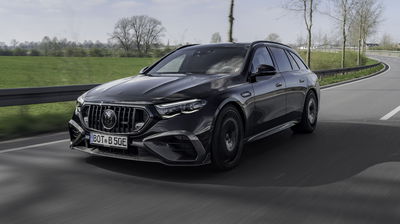5 Times Stripped-Out Specials Actually Cost Less Than The Regular Model

This week, we learned that the new 992 911 GT3 Touring costs exactly the same as the regular version. This, you might think, goes against Porsche’s usual mantra of giving you ‘less’ and charging you more.
It’s not that simple, of course. Normally when things are taken away it’s for the sake of weight reduction in a track-focused model, which normally involves adding a load of expensive suspension and aero technology. You might get a snazzier engine along with the deal, and the extensive use of carbon fibre to trim the fat further.
The 488 Pista (above) ticks all of those boxes, with Ferrari using its more exotic makeup to justify a premium of tens of thousands of pounds. But this hasn’t always been the way. Once upon a time, carmakers would strip out the luxuries, make more modest modifications elsewhere, and put the price down rather than up.
Don’t believe us? Here are some examples.
Porsche 968 Clubsport

Yep, even Porsche once did this. With the 968 not enjoying the warmest of receptions when it first arrived (and why would it, as what was essentially a heavy evolution of the then 15-year-old 924), the sports car needed some added excitement. Stuttgart decided the best way to achieve this was to take stuff away.
The sound insulation, electric windows, rear seat bench and more were all ripped out, while the electrically adjustable front seats were switched for lighter manual chairs. All told, 50kg was shed from the car, without the engineers having to resort to using the exotic materials we see in lightened specials today.
To go with the weight drop, Porsche dropped the ride height by 20mm and fitted wider tyres. The manufacturer rewarded buyers’ dedication to driving purity by giving them a whopping £4500 discount compared to the standard car. Ironically, as you’ll find with most of the cars on this list, the originally cheaper car is now by far the most expensive to buy on the used market.
Peugeot 306 Rallye

Peugeot had been doing Rallye models for a good while by the time the thusly-badged version of the 306 arrived. Plenty of time to perfect the recipe, and sure enough, the 306 Rallye was - and still is - a gem.
The GTI-6 was used as a starting point, but with the air conditioning, sound deadening and electric windows ditched. Leather trim was swapped for a combination of leather and suede, and you got those fancy Rallye decals on the bonnet and doors/front wings. All of this amounted to a weight reduction of 50kg.
The UK exclusive model was priced at £15,995, some £2000 less than a GTI-6. Only 500 were made, and the surviving examples are pricey.
Renault Sport Clio 182

There’s a long history of ‘Cup’ Renault Sport packages making a great deal of financial sense. For the Clio 182 Cup, for instance, the French manufacturer charged you £900 less than a standard 182. What’s more, it threw in the normally optional sportier suspension setup for free. This made for a total saving of £1300.
You did have to do without some creature comforts, though, with a basic fabric interior replacing the regular 182’s leather-trimmed cabin, and manual air conditioning instead of climate control. Still, it was better appointed than the 172 Cup, yet still 20kg lighter than a normal 182. Most importantly, you could spec it in the iconic Racing Blue.
Want to buy one? Make sure you read our Renault Sport Clio 172/182 buyer’s guide.
Mitsubishi Evo VII RS Sprint

The tradition of offering a less well equipped, lower-cost and marginally ‘RS’ versions of the Mitsubishi Lancer Evolution goes across multiple generations. For the Evo VII, though, the RS went one better with the ‘Sprint’ version, tweaked by Ralliart for the UK market.
These had a closer ratio gearbox and the fancy Active Yaw Control system switched for an open front differential and a mechanical limited-slip differential at the rear. Despite still getting 320bhp to play with, Mitsubishi charged £25,995, £4000 less than the regular model (pictured above).
Honda NSX Type-S Zero

Think Honda NSX track special, and it’ll no doubt be the NSX-R or Type R that springs to mind first. One that might not have come up on your radar is the Type S-Zero. This was introduced alongside the regular Type S when the car’s 3.0-litre V6 grew to 3.2 litres.
The Type S was already paired back, but the Zero took its diet even more seriously by binning things like the central locking, airbags and a lot of sound deadening. You even got thinner glass between the cabin and the engine bay.
Meanwhile, Honda stiffened up the suspension beyond the level of the standard NSX but just shy of the NSX-R, and added neat touches like a titanium gear knob and BBS wheels. The weight loss regime of the Type S is impressive enough at 45kg, but the Zero? That lost a whopping 95kg to give a new weight figure of 1224kg. And yes, it was cheaper, at 9.85 million Yen vs 10.35m for the Type-S.















Comments
No comments found.